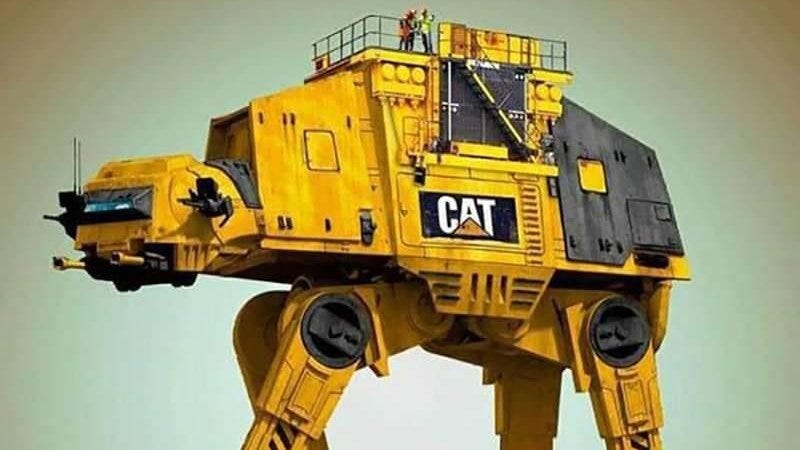Caterpillar: CAT and United Rentals for Some Capex Color
Excerpts from Footnotes and Flashbacks: Week Ending April 30, 2023
We are seeing earnings reports from some of the companies whose revenue lines and guidance offer some critical directional indicators on capex plans on the domestic as well as the global front. We have always been a fan of United Rentals for its very wide-angle view on the US-centric construction and industrial equipment demands, and the color from URI on its earnings call this past week was quite optimistic with very granular guidance offered for the full year.
As we covered in our note on United Rentals (see Signals & Soundbites: United Rentals 1Q23 4-29-23), an array of industry verticals are displaying solid fundamentals that are driving double-digit increases in Revenue and EBITDA for the #1 Equipment Rental operator in North America. That sort of top line and EBITDA growth is very supportive of credit quality, but the stock angles are somewhat distinct.
The doubts in the market on the ability of capital goods and machinery and equipment players to drive sustained growth is under a cyclical cloud at this point, and that can affect any combination of forecasts into 2024 and what multiple to assign such stocks. The range of customers (small, medium, and large) in the US-centric revenues for URI is different from what we see in Caterpillar (or at CNHI) with their global footprints and their exposure to the Full Monty of geopolitical uncertainty in Asia and Europe.
Despite good numbers, the forward-looking doubt is evident in the recent stock action in the Machinery and Equipment sector as well as some of the equipment rentals as noted below. The stock chart frames three major machinery and equipment companies and four major equipment rental operators. CAT has the most overlap of end markets of the manufacturers with the two major rental players (URI and Ashtead) and serves a long checklist of verticals and narrow industry groups from construction to industrial and energy and mining.
The stock return action is not giving the benefit of the doubt at this point by any means as the recent returns show. We line them up in descending order of rolling 3-month returns. We like to watch URI as a useful indicator of equipment needs in the US. The story with CAT is more about “What is going on in the World”?” whether in infrastructure spending or investment in such capex heavy sectors as Energy, Mining, and Manufacturing.
Caterpillar and peak cycle syndrome…
The results for CAT retail sales across Machinery, Resources, Construction, and Energy & Transportation were all positive in 1Q23 with only Construction posting a single digit increase and the rest in double digits. Individual sectors can break down into a wide range of industries from oil and gas to power generation and engines. Leafing through any major CAT investor presentation highlights the dizzying array of equipment types.
CAT’s 1Q23 numbers were well ahead of expectations with margins up materially YoY and pricing power very much in evidence. Revenues were up double digits YoY in 1Q23 across Construction Industries (+10% to $6.7 bn), Energy & Transportation (+24% to $6.25 bn) and Resource Industries (+21% to $3.4 bn). We cite the numbers and magnitude of the growth despite supplier chain headaches to underscore that CAT’s shabby stock returns in 2023 are tied into the expectation that this is the peak of the cycle.
Whether it is the peak in the North American region vs. EMEA, APAC, and LATAM is a different question, but the tone on US prospects was upbeat. That mirrors what we heard with URI. A disproportionate increase in earnings for Machinery, Equipment, and Transportation business lines was evident in the +52% increase in segment profits ex-Financial Products. We thus read some of the stock beatdown as tied to the worries about “peak risk” (a justifiable concern with those great 1Q23 numbers) and not economic contraction risk.
The equity market reactions detailed in the above stock return chart underscore some jitters around sustained demand growth and pricing power in some business lines. In CAT’s case, much of the improvement in 2023 was from price rather than volume, but the price action was part of slowly catching up with cost increases experienced in 2021 and early 2022. The low probability of sustained pricing power of the magnitude seen looking back is one for the equity players to get anxious over. From the standpoint of a sustained high rate of economic activity, that seems clear enough in the management comments.
The view on CAT consolidated in a global context is different from trying to frame the narrower read on the US economy. For the US/North American side of the ledger, there are some helpful tailwinds. We see longer term projects in a combination of infrastructure spending and new initiatives in connection with IRA projects bringing multiyear spending plans. The Energy Transition demand gets a lot of play in some CAT presentations.
In the results of the CAT Financial unit, we did not see anything signaling customer stress yet. Past dues were down slightly YoY to 2.0%, write-offs were low at $10 mn vs. $8 mn set against an allowance for losses of $348 mn or 1.27% of receivables vs. 1.29% at the 4Q22 quarter end. That does not signal signs of financial problems among financed buyers at this point.



